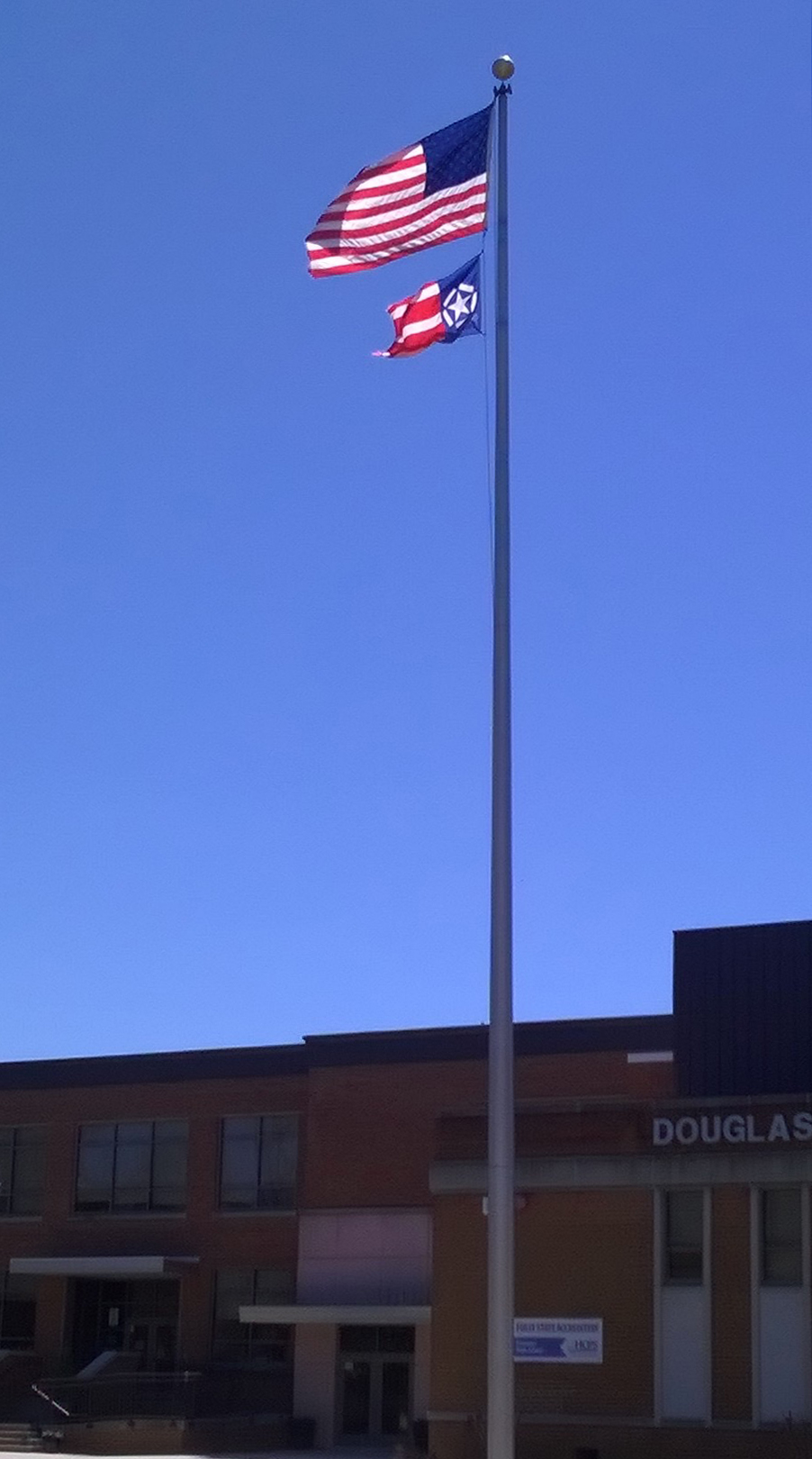-
David Kotz has some nice photos of the construction of the new Ravine Lodge.
-
The Rauner Library Blog has a post on the great railroad artist Howard Fogg ’38.
-
Spotted this flag at a Richmond, Virginia, area high school:

The star recalls the WWII Army Air Force insignia or the Chrysler Pentastar of the Eighties. Or it could be a battlefield map depicting a star fort surrounded by infantry units. The variety of bar widths is unusual. Flags of the World explains that it is “an official symbol of remembrance of September 11th” and that when it is hoisted vertically, the wide bars are meant to be seen as the Twin Towers.
It turns out that the flag’s designer owns a restaurant very close to the school, and that he has also designed a monument to the flag (in the shape of the flag, hoisted vertically) for a traffic island nearby. “Given that it is the home of the Freedom Flag, Henrico County is the natural choice for the location of the Freedom Flag Monument and Virginia 9/11 Memorial.”
-
Dartmouth Now seems to have changed its name to Dartmouth News.
-
Other college buildings based on Independence Hall are found at Brooklyn College:
and Westminster Choir College in Princeton, N.J. (see the Google Earth 3D image). -
Amherst has chosen as its mascot the Mammoth. The blurb explaining the Mammoth proposal notes that “The Beneski Museum of Natural History famously displays the skeleton of a Columbian mammoth, unearthed by Professor Frederick Brewster Loomis and brought to the College in 1925.” Museum specimens always provide good mascot options. Dartmouth’s museum displayed both a stuffed zebra and a set of curious elephant (i.e. mammoth) bones during the late eighteenth century.
-
The University of Virginia is celebrating its 200th anniversary and will feature bicentennial-logo zipper pulls on this year’s graduation gowns.
-
The city of Krakow has a new logo in the form of a city plan.
-
Last year the New York Times published interactive articles on mapping the shadows of New York and which existing Manhattan buildings could not be built today.
-
A Times obituary of March 13 noted the passing of the architectural historian and author of the Streetscapes column Christopher Gray. I was never able to meet him, but I was honored to have my site mentioned in his column on Lamb & Rich, and I enjoyed visiting the Office for Metropolitan History to do research in his compilations of 19th-century Times building permit notices (now they are in an online database provided by OMH, an amazing resource). The New Yorker ran an article about how Gray had left his skeleton to his school, St. Paul’s. What a character —